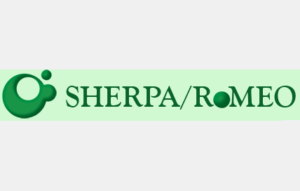Carcass Evaluation and Profitability of Feeding Bovine Rumen Filtrate-Fermented Wheat Bran to Noiler Chickens
The high cost of conventional poultry feed ingredients has posed significant challenges to sustainable and profitable poultry production in developing countries. As a response, this study evaluated the effects of incorporating bovine rumen filtrate-fermented wheat bran (BRF-FWB) in the diets of Noiler chickens on carcass characteristics and profitability metrics. Wheat bran, though abundant and cost-effective, is limited in poultry diets due to its high fibre content and poor digestibility. To enhance its nutritive value, wheat bran was fermented using fresh bovine rumen filtrate, a source of fibrolytic microbes, under anaerobic conditions for five days. The resultant BRF-FWB was then incorporated into experimental diets at 0% (T1 – control), 5% (T2), 10% (T3), and 15% (T4) inclusion levels. A total of 120 day-old Noiler chickens were randomly allotted into the four dietary groups, each replicated three times with 10 birds per replicate in a completely randomized design. At the end of the feeding trial, three birds per replicate were selected for carcass evaluation following standard procedures. Parameters assessed included live weight, dressed weight, dressing percentage, breast muscle weight, thigh and drumstick weight, and internal organ weights. Feed intake and weight gain data were used to compute feed conversion ratio (FCR), cost per kilogram feed, feed cost per kilogram weight gain, gross revenue, and gross margin to assess economic viability. The results showed that Noiler birds fed diets containing BRF-FWB performed comparably or better than those on the control diet in most carcass traits. Birds on the 10% inclusion level (T3) recorded the highest live weight (1903.3 g), dressed weight (1401.7 g), and dressing percentage (73.66%), which were significantly (P<0.05) higher than those in other groups. Breast and thigh weights followed a similar pattern. Internal organ weights were within normal physiological ranges and not adversely affected by dietary treatments, suggesting no negative impact on organ integrity. In terms of economic analysis, the cost per kilogram of feed decreased progressively with increasing levels of BRF-FWB, from ₦145.55 in the control to ₦141.26 in T4. Feed cost per bird and cost per kilogram weight gain were lowest in T3 (₦256.31 and ₦0.21, respectively), while the highest gross margin (₦848.24) and revenue (₦1104.54) were also recorded in T3. These findings suggest that inclusion of BRF-FWB up to 10% optimizes both carcass yield and economic returns. In conclusion, dietary incorporation of BRF-FWB up to 10% is not only safe and nutritionally adequate for Noiler chickens but also confers significant cost-saving benefits. This innovation offers a sustainable, low-cost alternative to conventional feed ingredients without compromising carcass quality or profitability. Wider adoption of BRF-FWB feeding strategies by smallholder poultry farmers could enhance income generation, reduce feed-related production costs, and contribute to food security through increased meat yield. Further studies are recommended to evaluate its application in breeder stock and layers.
Keywords: Noiler chickens, bovine rumen filtrate, fermented wheat bran, carcass characteristics, feed cost analysis, profitability.




















